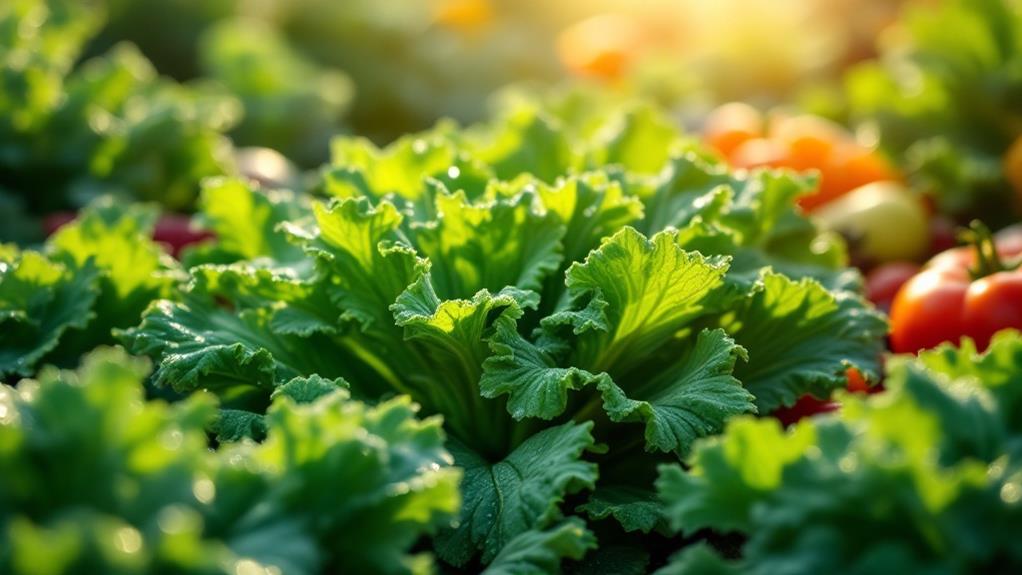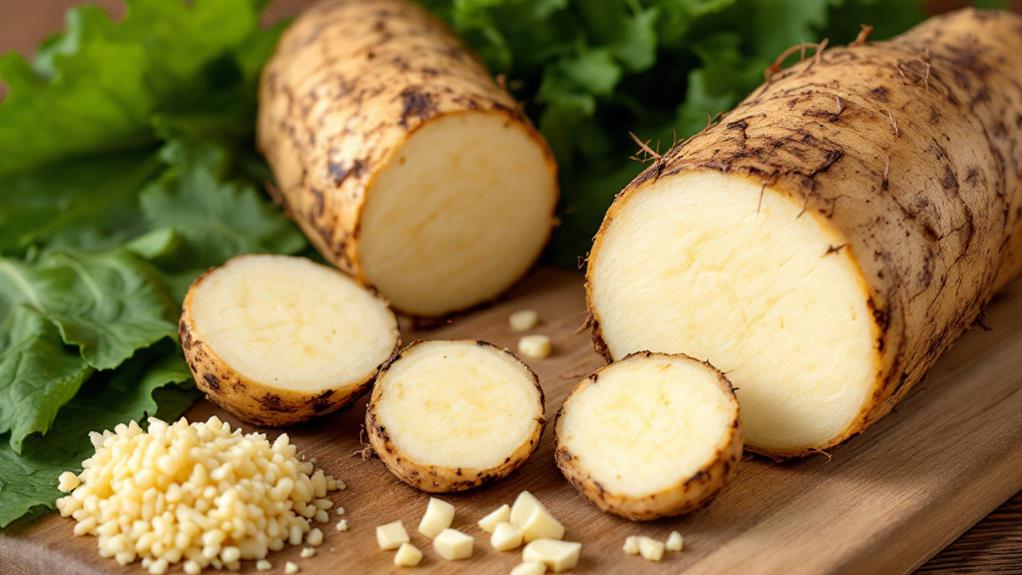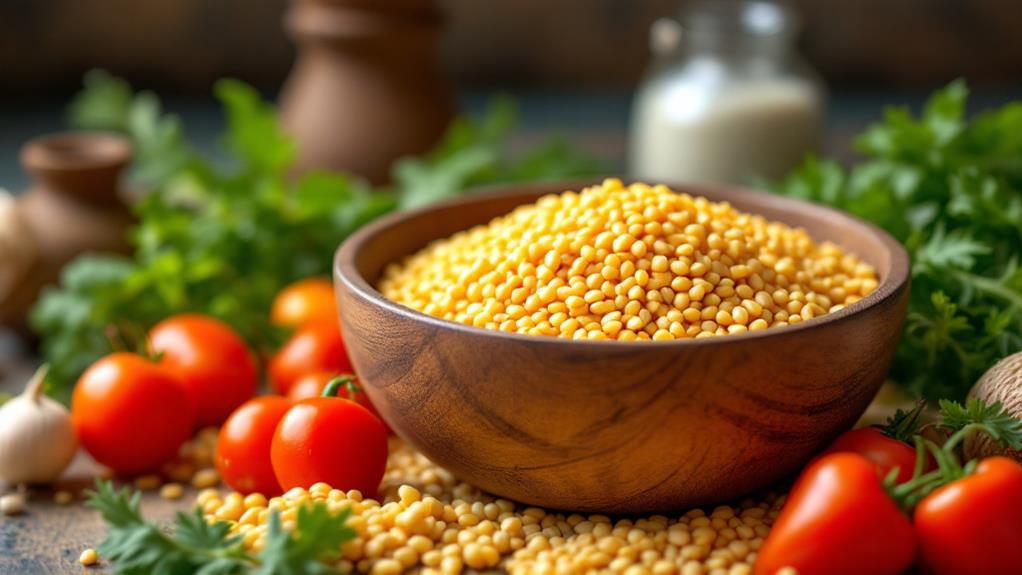Everything to Know About Matoa: A Nutritional Guide to This Unique Fruit
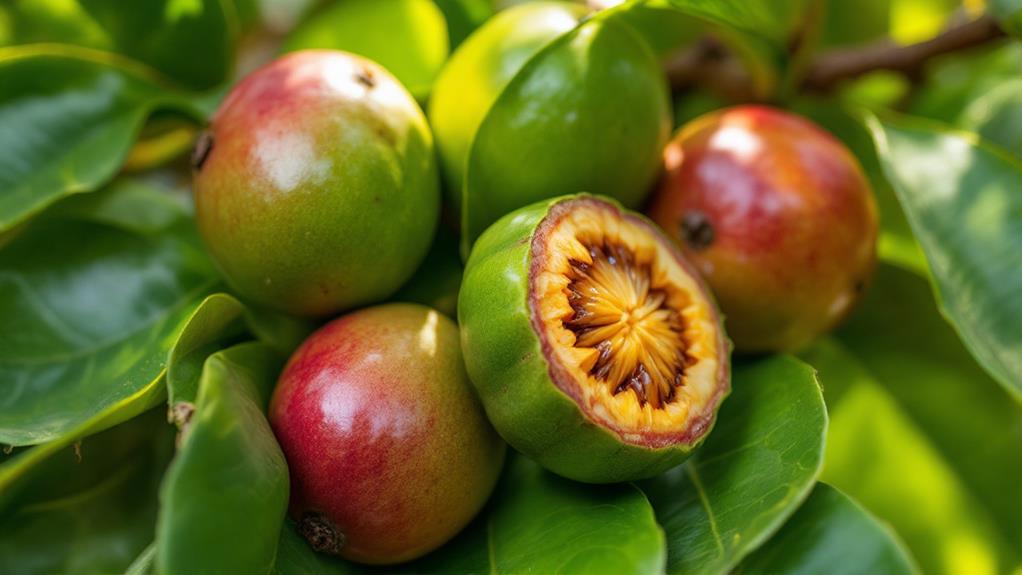
Uncover the delightful Matoa fruit, known for its sweet, lychee-like flavor and unique health benefits. Typically harvested during Indonesia's monsoon season, its translucent white pulp is a must-try. With only 60 calories per 100 grams, it's packed with vitamin C, dietary fiber, and vital minerals like potassium and calcium. This makes it excellent for immune support, digestive health, and heart wellness. Enjoy it fresh, in salads, or as a syrup for your favorite desserts. Symbolic of Indonesian heritage, it's both a culinary and cultural gem. Welcome the wonders of Matoa by exploring its full range of benefits and uses.
Matoa Fruit Characteristics
Although often overlooked, the matoa fruit, scientifically known as Pometia pinnata, boasts a distinctive appearance and flavor that you shouldn't miss. This oval-shaped fruit ranges from 5-7 cm in length and 3 cm in width, making it an intriguing enhancement to your fruit basket. The matoa fruit's skin varies in color, shifting from green to red as it ripens. This change of hue is not just a visual treat but also a sign of its readiness to deliver a unique taste experience.
Peeling away the tough, medium-thin skin reveals a translucent white pulp, reminiscent of lychee or mangosteen. The texture is soft and fragrant, making it a delight to consume. The matoa fruit's flavor profile closely resembles longan or rambutan, offering a sweet and aromatic experience that tantalizes your taste buds. Occasionally, the skin displays mottling during its maturation, contributing to its visual appeal. This characteristic makes the matoa fruit stand out among other tropical fruits.
When you come across this fruit, you'll find that its unique characteristics are worth exploring. So, next time you spot matoa, don't hesitate to indulge in its delightful taste and appearance.
Seasonal Availability
With its unique taste and appealing characteristics, the matoa fruit deserves attention not just for its flavor but also for its seasonal availability. If you're keen to enjoy matoa, you'll find it primarily available during Indonesia's monsoon season, which runs from November to March. This timing isn't coincidental; it aligns perfectly with regional weather patterns that create ideal conditions for harvesting. During this time, matoa trees thrive, and the fruits reach their perfect size and maturity, making the monsoon months the peak season for enjoying fresh matoa.
However, be aware that seasonal fluctuations can affect the market supply. Outside the monsoon season, matoa fruit becomes more scarce, and finding it might require extra effort or paying a premium. Matoa trees have the potential to produce fruit twice a year under ideal conditions, but the main harvest still aligns with the monsoon period. This means that while you might occasionally find matoa outside of these months, the best and most abundant supply occurs during the rainy season. So, if you're planning to incorporate matoa into your diet, timing your purchase with its seasonal availability guarantees the best quality and freshness.
Nutritional Composition

When you're looking for a nutritious snack, the matoa fruit stands out due to its impressive nutritional profile. With only 60 calories per 100 grams, you can enjoy this fruit without worrying about your calorie intake. It's packed with carbohydrates, offering about 15 grams per 100 grams, providing you with a quick energy enhancement. This makes matoa an excellent choice if you need a pick-me-up throughout your day.
The matoa fruit also contributes to a balanced diet with its 0.5 grams of fat and 1.5 grams of protein per 100 grams. These macronutrients are vital for maintaining your body's daily functions. Plus, the fruit's high dietary fiber content, approximately 3 grams per 100 grams, supports digestive health, helping you feel fuller for longer.
Moreover, matoa is rich in Vitamin C, boasting around 20 mg per 100 grams. This vitamin is significant for strengthening your immune system and promoting general health. Although Vitamin E isn't highlighted in the facts provided, fruits like matoa often contain a range of beneficial nutrients. By including matoa in your diet, you're choosing a tasty and health-supportive option.
Health Advantages
Exploring the nutritional richness of matoa reveals a range of health advantages that make it a smart choice for anyone looking to improve their well-being. Packed with vitamin C, matoa elevates your immune system, helping your body fight viral infections more effectively. With 20 mg of vitamin C per 100 grams, this fruit offers powerful antioxidant benefits, which protect your cells from damage and keep you feeling energized.
Matoa's dietary fiber content, about 3 grams per 100 grams, supports digestive health. This fiber aids in maintaining regular bowel movements and can help you manage your weight by keeping you feeling full longer. It's an ideal snack for those mindful of their calorie intake, as matoa is low in calories, with only about 60 calories per 100 grams.
Additionally, the potassium in matoa plays an essential role in heart health. This mineral helps regulate blood pressure, reducing the risk of heart disease. Furthermore, calcium in matoa strengthens your bones, contributing to comprehensive skeletal health. By incorporating matoa into your diet, you're not only enjoying a delicious fruit but also supporting your body's fundamental functions naturally and effectively.
Culinary Applications
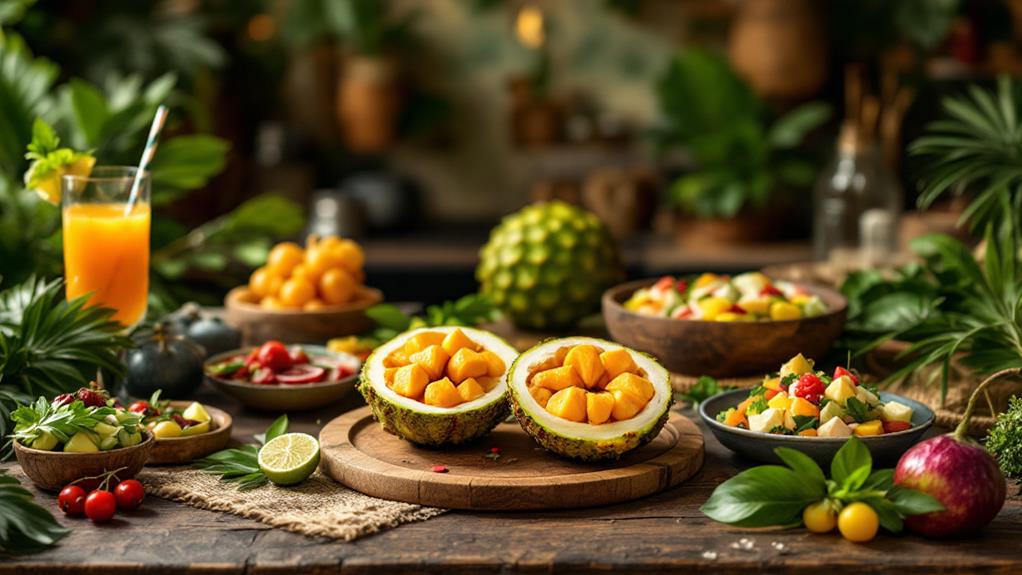
In the domain of culinary applications, matoa fruit offers adaptable and exciting possibilities. With its sweet taste and juicy texture, it's a delightful snack you can enjoy fresh. Just peel and pop it into your mouth for a burst of flavor. Its inclusion in tropical fruit platters adds a unique element that's sure to impress.
Consider adding matoa to your fruit salads. Its sweet taste pairs beautifully with citrus dressings and other fruits, creating a revitalizing medley. The pulp can also be blended into smoothies, where it improves the beverage with a fragrant and flavorful profile reminiscent of lychee and rambutan.
For a more creative approach, transform matoa juice into syrup. Drizzle this over desserts like ice cream or pancakes, or use it as a sweetener in assorted dishes. If you enjoy making preserves, matoa can be turned into jams and jellies, offering a distinctive taste that stands out from more common tropical fruit options.
Incorporating matoa into your culinary repertoire not only broadens your dishes but also brings an exotic touch that's sure to delight both you and your guests.
Cultural Significance
Matoa fruit, affectionately known as Buah Matoa in Indonesia, holds a special place in the cultural tapestry of Papua. It's not just a typical fruit of the region; it's a symbol of local heritage. The Matoa tree itself is deeply woven into the life of the community. Its wood is used for furniture and construction, which shows how integral it is to day-to-day cultural practices.
When you wander through the lively street markets in Borneo and Java, you'll see Matoa fruit tied in bunches with string, an indication of its popularity and accessibility. This doesn't just reflect its nutritional value but also its role in connecting people through shared tastes and traditions. Former President Megawati even encouraged its cultivation to promote sustainable planting, emphasizing its significance in environmental stewardship.
Beyond its cultural roots, the fruit's unique taste and health benefits make it highly sought after, both locally and internationally. As you investigate the cultural significance of Matoa, you'll appreciate how this fruit and the Matoa tree contribute to both the cultural richness and economic importance of the communities that cherish them.
Growing and Harvesting
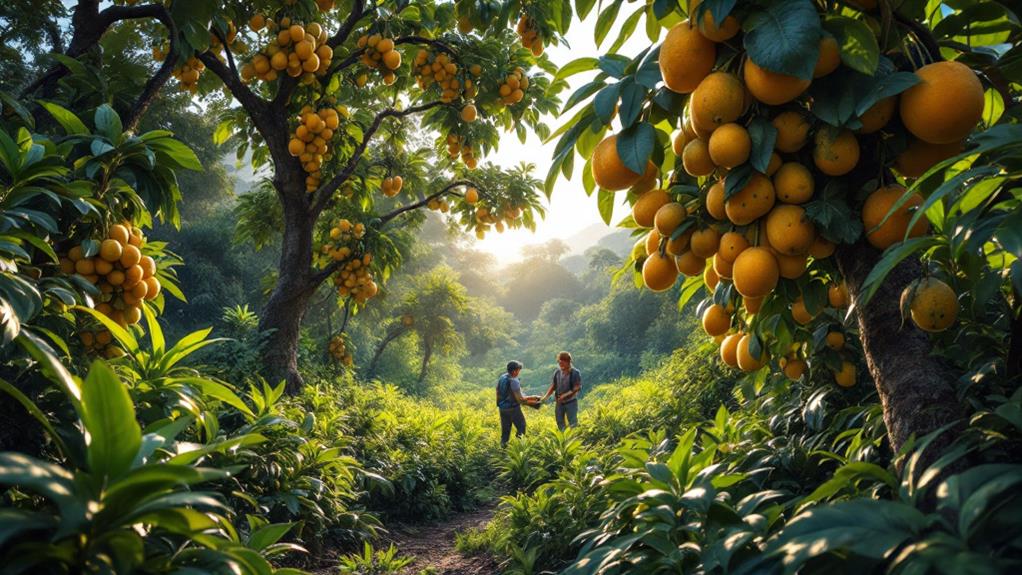
Cultivation of matoa trees embodies the harmony between nature and human effort in tropical climates. These majestic trees thrive in warm, humid conditions and can reach impressive heights of 20 to 40 meters. To guarantee your matoa trees flourish, focus on providing well-drained soil to prevent root rot, a common issue in overly saturated conditions. Careful monitoring for pests is vital to maintain tree health and enhance fruit yield, allowing you to enjoy the fruit's rich nutritional benefits, including its potential to combat free radicals.
The growing process requires patience and attention, but the reward is well worth it. Here's what you need to know:
- Climate: Matoa trees need a tropical climate with consistent warmth and humidity to grow efficiently.
- Soil: Verify the soil is well-drained to prevent root rot, which can hinder the tree's growth and productivity.
- Harvesting: The fruit is typically ready for harvest four months after flowering, aligning with the monsoon season from November to March, and reaches full ripeness when it turns green or blackish-red.
With these steps, you'll nurture your matoa trees to provide nutritious fruit rich in antioxidants that fight free radicals.
Recipe Inspirations
When you're seeking culinary creativity, matoa fruit offers a delightful array of possibilities. This typical fruit from Papua can transform your dishes with its unique flavor. Start by making a lively fruit salad; combine fresh matoa with a citrus dressing. The sweet notes of matoa perfectly balance the tangy dressing, creating a rejuvenating dish perfect for any occasion.
If you're in the mood for a smoothie, blend the soft pulp of matoa with other tropical fruits. This not only increases the drink's nutritional value but also amplifies its flavor profile, offering a tropical escape in every sip. For a sweeter touch, prepare matoa syrup by extracting the pulp and sweetening it. Drizzle it over pancakes or ice cream for a deliciously unique topping.
Matoa also shines in beverages. Mix the fruit pulp with sparkling water or your favorite spirits to craft matoa-infused juices or cocktails. These beverages offer a unique twist on traditional drinks. Finally, investigate savory pairings with matoa chutney. Its sweet and tangy notes complement grilled meats or curries, showcasing its versatility and adding an exotic touch to your culinary repertoire.

